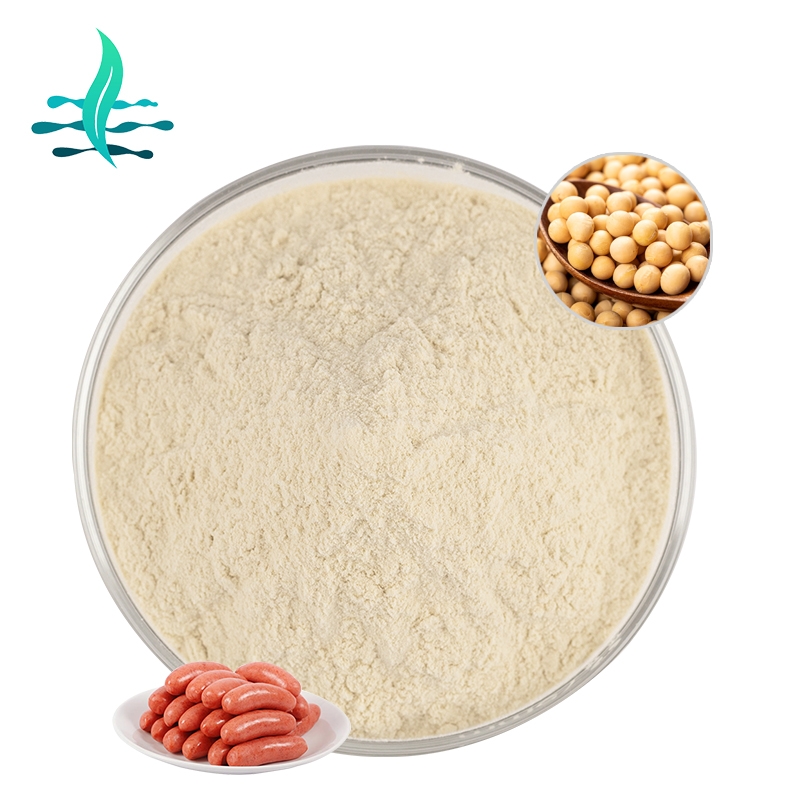-
Categories
-
Pharmaceutical Intermediates
-
Active Pharmaceutical Ingredients
-
Food Additives
- Industrial Coatings
- Agrochemicals
- Dyes and Pigments
- Surfactant
- Flavors and Fragrances
- Chemical Reagents
- Catalyst and Auxiliary
- Natural Products
- Inorganic Chemistry
-
Organic Chemistry
-
Biochemical Engineering
- Analytical Chemistry
- Cosmetic Ingredient
-
Pharmaceutical Intermediates
Promotion
ECHEMI Mall
Wholesale
Weekly Price
Exhibition
News
-
Trade Service
Canada is often considered to be a "tall and big" country with a vast territory and developed economy, but in fact it is also a "down-to-earth" agricultural country and a famous "granary" in the world
.
Canada is rich in oilseeds , grains and meat .
It is the world's largest rapeseed producer and a major producer of wheat , barley , soybeans and beef
.
In addition to domestic consumption, about half of Canada’s agricultural products are exported and highly dependent on the international market.
Therefore, the Canadian government attaches great importance to the promotion of agricultural exports
.
Canada is currently the world's eighth largest exporter of agricultural products, and the international market share of rapeseed, wheat and other products ranks among the best
.
So, what measures has the Canadian government taken to promote agricultural exports?
.
Canada is rich in oilseeds , grains and meat .
It is the world's largest rapeseed producer and a major producer of wheat , barley , soybeans and beef
.
In addition to domestic consumption, about half of Canada’s agricultural products are exported and highly dependent on the international market.
Therefore, the Canadian government attaches great importance to the promotion of agricultural exports
.
Canada is currently the world's eighth largest exporter of agricultural products, and the international market share of rapeseed, wheat and other products ranks among the best
.
So, what measures has the Canadian government taken to promote agricultural exports?
1.
Overview of Canadian agricultural production and export
Overview of Canadian agricultural production and export
Thousands of rivers, mountains and half of the field, farming is more expensive for food
Canada is rich in agricultural resources and agricultural production is highly commercialized
.
As we all know, Canada is a vast country with the second largest territory in the world
.
However, Canada has a higher latitude, and the southernmost latitude is similar to China's northeastern region.
The climate is relatively cold, and there are few land suitable for agriculture, and the area of arable land only accounts for 4% of the country
.
Even so, Canada has sufficient arable land resources, and the per capita arable land area ranks third in the world
.
As a country with no worries about land, Canadian farms are generally large in scale, about half of the farms have an area of more than 100 hectares, and they are all mechanized and specialized production
.
The population engaged in agriculture is very small, accounting for only 2% of the total employed population, so the degree of commercialization of agricultural products is high
.
.
As we all know, Canada is a vast country with the second largest territory in the world
.
However, Canada has a higher latitude, and the southernmost latitude is similar to China's northeastern region.
The climate is relatively cold, and there are few land suitable for agriculture, and the area of arable land only accounts for 4% of the country
.
Even so, Canada has sufficient arable land resources, and the per capita arable land area ranks third in the world
.
As a country with no worries about land, Canadian farms are generally large in scale, about half of the farms have an area of more than 100 hectares, and they are all mechanized and specialized production
.
The population engaged in agriculture is very small, accounting for only 2% of the total employed population, so the degree of commercialization of agricultural products is high
.
The sky is blue, the wild is boundless, the wind blows the grass and the cows and sheep are low
Canada is sparsely populated and suitable for the development of large-scale agriculture.
It mainly grows oilseeds, grains and other field crops and raises herbivores such as beef and dairy cows
.
Agricultural production areas are concentrated in several grassland provinces in the Midwest (Saskatchewan, Alberta and Manitoba).
The climate and geographical conditions in this area are suitable for the development of relatively extensive agriculture, such as rapeseed and beef cattle.
And the main producing area of wheat
.
The eastern and western regions near the coast have a relatively mild and humid climate and a relatively dense population.
They mainly produce horticultural products such as vegetables, fruits, flowers, and livestock products such as dairy products, pork, and poultry
.
It mainly grows oilseeds, grains and other field crops and raises herbivores such as beef and dairy cows
.
Agricultural production areas are concentrated in several grassland provinces in the Midwest (Saskatchewan, Alberta and Manitoba).
The climate and geographical conditions in this area are suitable for the development of relatively extensive agriculture, such as rapeseed and beef cattle.
And the main producing area of wheat
.
The eastern and western regions near the coast have a relatively mild and humid climate and a relatively dense population.
They mainly produce horticultural products such as vegetables, fruits, flowers, and livestock products such as dairy products, pork, and poultry
.
Keep your own, sell out the American ones, and the rest will be global
About half of Canadian agricultural products are exported, half of which are exported to the United States, and the rest are sold to China, Japan, Mexico and other countries
.
Canada mainly exports oilseeds, grains, meat, etc.
, among which exports of wheat, rapeseed, soybeans and rape oil account for more than half of the output
.
The main trading partner is the neighboring United States.
The two countries have signed the "U.
S.
-Mexico-Canada Agreement" with Mexico, which provides tariff-free import of most agricultural products.
With convenient transportation conditions, the United States has become Canada's largest agricultural product export market
.
China is Canada’s second largest export market, accounting for about one-tenth of Canada’s agricultural exports, and is the main export destination for rapeseed, wheat, and barley
.
.
Canada mainly exports oilseeds, grains, meat, etc.
, among which exports of wheat, rapeseed, soybeans and rape oil account for more than half of the output
.
The main trading partner is the neighboring United States.
The two countries have signed the "U.
S.
-Mexico-Canada Agreement" with Mexico, which provides tariff-free import of most agricultural products.
With convenient transportation conditions, the United States has become Canada's largest agricultural product export market
.
China is Canada’s second largest export market, accounting for about one-tenth of Canada’s agricultural exports, and is the main export destination for rapeseed, wheat, and barley
.
2.
Measures to promote the export of Canadian agricultural products
Measures to promote the export of Canadian agricultural products
Canada supports agricultural development through the formulation of a "five-year plan" for agricultural policies, and export promotion is an important part of it
.
The latest round of agricultural support policies is called the "Canadian Agricultural Partnership" (Canadian Agricultural Partnership).
One of the policy goals is to expand agricultural trade, and a series of funding projects have been set up for this purpose
.
.
The latest round of agricultural support policies is called the "Canadian Agricultural Partnership" (Canadian Agricultural Partnership).
One of the policy goals is to expand agricultural trade, and a series of funding projects have been set up for this purpose
.
Agricultural Marketing Plan
It mainly supports agricultural associations and small and medium-sized enterprises to carry out advertising promotions, market surveys, trade seminars, international exhibitions and other marketing activities to promote the products of their own industries or enterprises
.
.
Agricultural Competitiveness Program
Support non-profit associations and indigenous groups to carry out training and publicity activities to increase the recognition of Canadian agricultural products in foreign markets
.
.
Agricultural Innovation Program
Funding companies and cooperatives and other for-profit organizations to develop new products and technologies, and to promote and commercialize them, so as to consolidate and expand the Canadian agricultural product export market
.
.
Agricultural Security Plan
Support small and medium-sized enterprises to carry out third-party certification of agricultural products to expand export opportunities
.
.
In addition to providing financial support, the Canadian government also provides various public services to guide enterprises to carry out export activities
.
The first is information services, including trade knowledge, market intelligence, exhibition information, etc.
, to help companies find market opportunities
.
The second is the trade commissioner service, which uses trade commissioners distributed in more than one hundred cities around the world to provide companies with local market information, export guides, exchanges and negotiations and other services
.
The third is brand building, establishing a Canadian brand, designing packaging and promotional materials for eligible companies, and promoting the brand at international exhibitions through the Canadian National Pavilion to increase product awareness
.
.
The first is information services, including trade knowledge, market intelligence, exhibition information, etc.
, to help companies find market opportunities
.
The second is the trade commissioner service, which uses trade commissioners distributed in more than one hundred cities around the world to provide companies with local market information, export guides, exchanges and negotiations and other services
.
The third is brand building, establishing a Canadian brand, designing packaging and promotional materials for eligible companies, and promoting the brand at international exhibitions through the Canadian National Pavilion to increase product awareness
.







